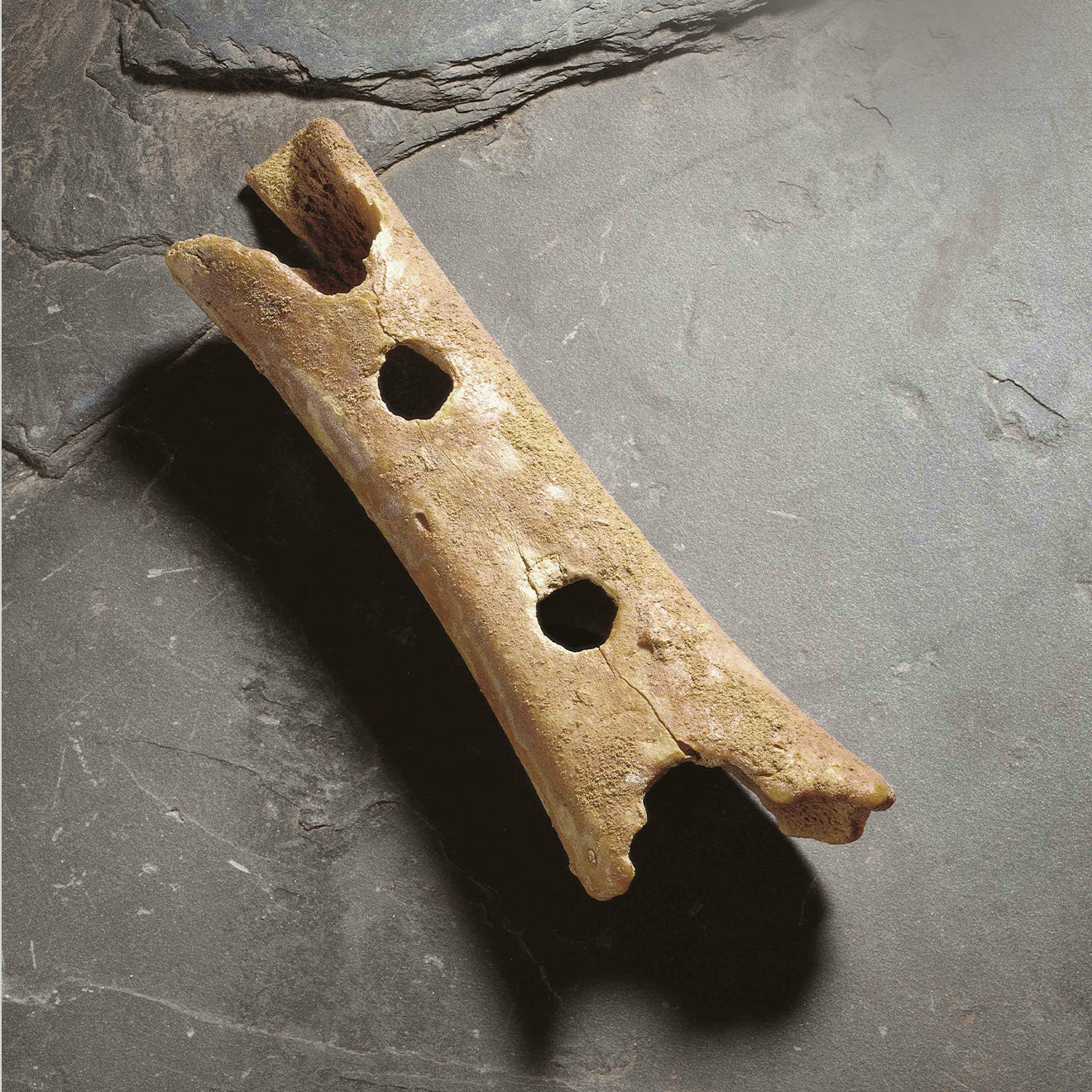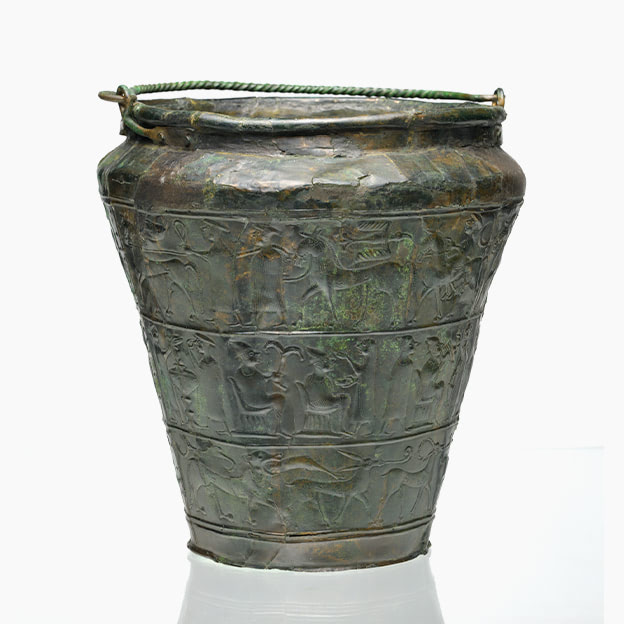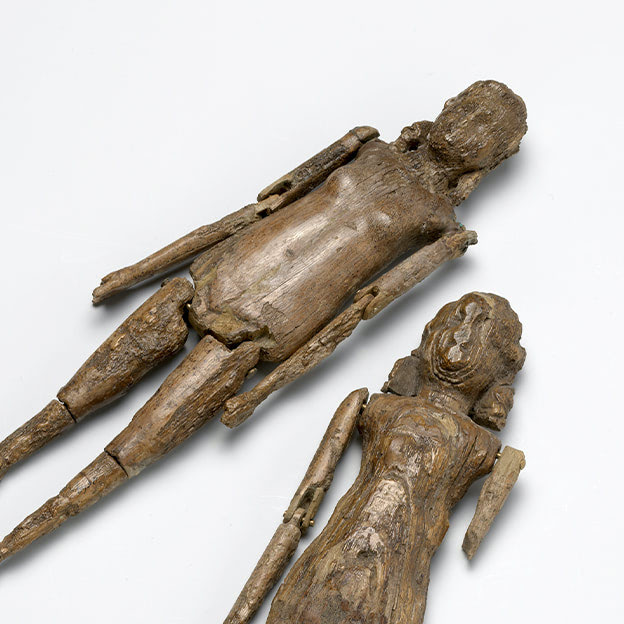

-
NEANDERTHAL FLUTE
The oldest musical instrument in the world, 60,000 years before present
The oldest musical instrument in the world, a 60,000-year-old Neanderthal flute is a treasure of global significance. It was discovered in Slovenia, in Divje Babe cave near Cerkno.
The flute from Divje Babe is the only one that was definitely made by Neanderthals. It is about 20,000 years older than other known flutes, made by anatomically modern humans. This discovery confirms that the Neanderthals were, like us, fully developed spiritual beings capable of sophisticated artistic expression.
It is made from the left thighbone of a young cave bear and has four pierced holes. Musical experiments confirmed findings of archaeological research that the size and the position of the holes cannot be accidental – they were made with the intention of musical expression.
The shape of the selected thighbone, its preserved length, a mouthpiece (deliberately sharpened edge at the top), and the results of CT scans allowed an accurate and authentic reconstruction of the instrument which allows a wide range of sonority in melodic movement. In terms of musical performance, the instrument is superior to the other reconstructed Palaeolithic musical instruments, and it is ergonomically adapted to a right-handed musician.

-
TWO GOLDEN APPLIQUÉS
The oldest gold artefacts found in the territory of modern-day Slovenia, 13th or 12th century BC
These extraordinary appliqués were part of treasures deposited in the Bronze Age as an offering to gods on the shore of Lake Bled. The prestigious gold appliqués also indicate that the lake was an important centre of a cult.
Gold artefacts were a rarity in the Bronze Age, and from where came the gold for making the ornaments' is unknown. Similar appliqués have been discovered in Switzerland, Bavaria and Hungary, mainly in Bronze Age fortified settlements and in the graves of wealthy women.
The small perforations visible on the edges of ornaments that were made of thin gold metal, suggest the ribbons were secured to something, most likely stitched to a traditional garment, possibly headgear. The ornamentation bears markings of the solar and lunar year.

-
VAČE SITULA
One of the finest artefacts of situla art, Early 5th century BC
A situla is a decorated bucket-shaped vessel. Vače, small town, where the situla was found, was one of the most important Hallstatt settlements in the territory of Slovenia and beyond in the 6th and 5th centuries BC. Its quality design and craftsmanship in figurative representations make the situla one of the finest artefacts of situla art. It is even more important that it was crafted by a skilled local artisan. It is exceptional for its excellent preservation.
The situla was placed in the grave of a wealthy warrior, together with his helmet, two spears, battle-axe, a bracelet and a military belt. Only the skull of the young warrior's skeleton has been preserved to this day. In the Iron Age, young warriors had a special role and the most distinguished became the leaders of their communities.
This famous situla which was crafted in the Iron Age is decorated with three horizontal bands – friezes, showing human and animal figures. The scenes that read in a sort of comic book sequence of events tell the story of the important acts and events from the noble's life. Situlas were supposed to have been used as ritual vessels to serve beverages.

-
IVORY DOLLS
Extremely rare examples of preserved ivory dolls with movable joints from the Roman period, 2nd half of 3rd century AD
These dolls are extremely rare examples of preserved ivory dolls from the Roman period. Their material and exquisite workmanship made them valuable even at the time they were made. They were placed in the tomb of a girl from a wealthy Emona family.
These jointed figurines (movable shoulder, elbow, hip and knee joints) were most likely crafted in Rome itself and painted with vivid colours. Their date is revealed primarily by the hairstyle; the hair is combed back and behind the ears, reaching down to the shoulders at the nape, as was fashionable in the 3rd century.
Much the same as today, the girls from the Roman period played with similar less valuable dolls made from terracotta, bones, wood, and wax. When they got married, girls gave their toys to deities thus they can only rarely be found in graves.
